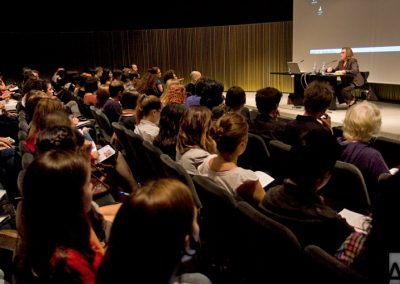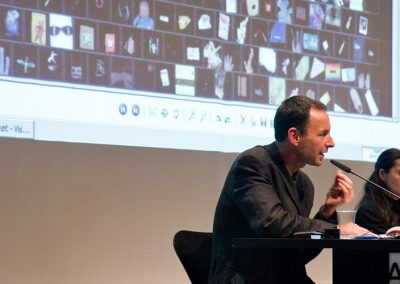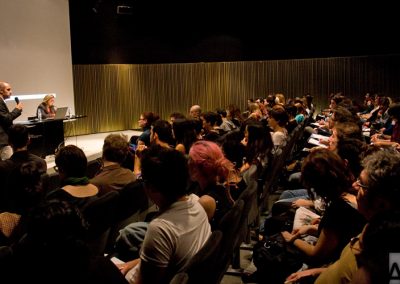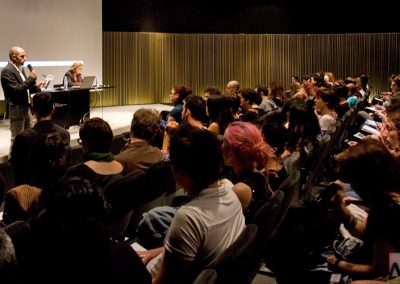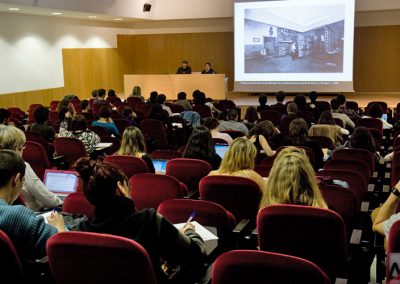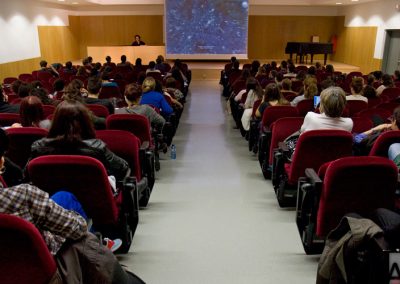The Anarchival Impulse in Contemporary Art
Workshop
October 24-26, 2012, Barcelona, Catalonia
Organizing Team
Organized by: AGI | Art, Globalization, Interculturality, Departament d´Història de l’Art, Facultat de Geografia i Història, Universitat de Barcelona.
Direction: Anna María Guasch
Coordination: Ada Sbriccoli
Associated Researchers: Alejandro Bauzà Bardelli, Arola Valls Bofill, José Luis Bravo
Program
Day I: Archival Times
MACBA, Auditorium
7:30 pm
Presentation: Anna Maria Guasch
Moderator: Eirini Grigoriadou
Inaugural Conference: Wolfgang Ernst, Humbolt Universität, Berlin
Aura and temporality: the insistence of the archive. Media-archaeological analysis focuses on the message of the medium itself. Applied to memory agencies and especially the “digital archive”, this method demands a new interpretation of its different epistemological and aesthetical dimensions. While the tradicional archival format (spatial order, classification) will in many ways necessarily persist, the new archive is radically temporalized, ephemeral, multimodal, corresponding with a dynamic user culture which is less concerned with records for eternity but with order in fluctuation. New kinds of search engines will not only answer the needs of knowledge retrieval but develop into a creative “art of the archive” itself.
This talk will first aim at a critique of the aesthetics of the “anarchival” which misses the archival point. There is nothing “anarchic” in the digital world; every action here is based on precise algorithms. What in public discourse and especially in the artistic world is frequently called the “archive” turns of to be, in most cases, a most unprecise metaphor for all sorts of collections and memory. The very term “anarchival impulse” is itself an indication of the/insistence/of the archival rules and the fascination of the archival power; let us turn the same notion into something positive by re-defining it in techno-mathematical terms.
While this workshop addresses archiving practices, appropriation, circulation and migration of images as well as new forms of image archives (be it artistic or non-artistic), it is in fact debatable whether moving image portals in the Internet like YouTube represent an “archive” at all. Let us instead imagine “experimental archives” different from the well-organized institutional archive. Quantized (digitized) images can be transformed into a vast image bank which then as data-set can be, once unified, subjected to image-based search operations such as matching of similarities, object feature detection, statistical colour value comparison etc.
Let us finally take the “musical” dimension of the image archive not in its apparent audible sense, but rather referring to the essential quality of the sonic event: It is radically time-based. The archival “aura” (in the Benjaminean sense) does not simply emenate from its air of secrecy and power-relation; it stems from a specific temporality as well, in fact: its temp/aura/lity.
Day II: Atlas
Universitat de Barcelona, Aula Magna
5:00 – 7:30 pm
Presentation: Alejandro Bauzà Bardelli
Translation: Nasheli Jiménez del Val
Conference: Joachim Schmid, Artist, Berlin
Mandatory Readings:
• BUCHLOH, Benjamin H. D. «Warburg’s parangon? The End of Collage and Photomontage in Poswar Europe». In: Deep Storage: Collecting, Storing and Archiving in Art. Múnic: Prestel, 1998, 50-60
• WARBURG, Aby. Atlas Mnemosyne. Madrid: Akal, 2010
Optional Readings:
• GOMBRICH, Ernst H. «El último proyecto: Mnemosyne». In: Aby Warburg: una biografía intelectual. Madrid: Alianza, 1992, 263-282
• FOSTER, Hal. «An archival impulse». October, 110, 2004, 3-22
Day III: Anarchive Art Practices
Universitat de Barcelona, Aula Magna
5:00 – 7:30 pm
Presentation: Arola Valls Bofill and José Luis Bravo
Conference: Daniel García Andújar, Post-Capital Archive 1989-2001
Mandatory Readings:
• ERNST, Wolfgang. «Archival Times. Tempor(e)alities of media memory»
In: Røssaak, Eivind (ed.). The Archive in Motion. New Conceptions of the Archive in Contemporary Thought and New Media Practices. Oslo: Studies from the National Library of Norway, 2011
• SEKULA, Alan. «Reading an Archive: Photography Between Labour and Capital»
In: Evans, Jessica; Hall, Stuart (ed.). Visual Culture: The Reader. London: Sage Publications, Open University, 1999
Optional Readings:
• LAGER Vestberg, Nina. «Archival Value: On photography, materiality and indexicality». In: Photographies, Vol.1, #1 (2008), pp. 49-65
• TAGG, John. The Burden of Representation: Essays on Photographies and histories. Amherst: University of Massachusetts, 1988
The first workshop of this group, hosted at the University of Barcelona, addresses several issues related to the visual archive and the anarchival impulse in the uses of the image in contemporary art. The three days workshop will engage with topics addressing transcultural archiving practices, appropriation, circulation and migration of images on a global scale, as well as the form of archives, documents, histories or collections in the field of contemporary art.
Part of the workshop will consist of keynote presentations and imput comments by the core members of the research group, introducing discussions of selected readings. Onother part will be devoted to guest speakers’ talks and project presentations by invited artists. Beyond the standardized structure of academic lectures, the workshop format encourages horizontal interchange and collective knowledge production, facilitating the establishment of collaborative networks between participants.

Opening Conference:
Wolfgang Ernst
Wolfgang Ernst is professor and Chair at the Institute for Musicology and Media Studies, Humboldt University (Berlin). He is author of several works in the area of media archeology and archiving, including Das Rumoren der Archive: Ordnung aus Unordnung (2002, in Swedish: Sorlet från arkiven, 2008), Im Namen von Geschichte: Sammeln, speichern (er)zählen (2003), Das Gesetz des Gedächtnisses. Medien und Archive am Ende (des 20. Jahrhunderts) (2007).

Speaker:
Joachim Schmid
Joachim Schmid began his career in the early 1980s as a freelance critic and the publisher of Fotokritik, a German photography resource. In 1987 Schmid focused on his own art making, based primarily on found photography and public image sources. In recent years, his work has taken him to the Internet to create provocative works that reflect the future of photography in a networked, global culture. His work is included in major museum collections and he received a Grant by the Mondriaan Foundation in 1997. Schmid lives and works in Berlin.

Speaker:
Daniel García Andújar
Daniel García Andújar is a visual media artist, activist and art theorist from Spain. He lives and works in Barcelona. His work has been exhibited widely, including Manifesta 4 and the Venice Biennale. Andújar is one of the principal exponents of Net.art, founder of Technologies To The People and a member of irational.org. The most prominent projects in this sphere would be the Street Access Machine (1996), a machine allowing those begging in the street to access digital money; The Body Research Machine (1997), an interactive machine that scanned the body’s DNA strands, processing them for scientific experiments, and x-devian by knoppix, an open-source operating system presented as part of the Individual Citizen Republic Project: The System (2003) project. Andújar is the director of numerous internet projects, such as e-sevilla, e-valencia, e-madrid and e-barcelona.
Venues
MACBA, Museum of Contemporary Art, Auditorium
Plaça dels Angels 1, 08001 Barcelona, Catalonia
www.macba.cat
UB, Universitat de Barcelona, Aula Magna
Montalegre 6, 4th Floor, 08001 Barcelona, Catalonia
www.ub.edu
Certificate of attendance issued


